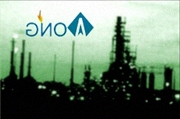Tutor HuntResources Presentation Resources
Crude Oil Components
what are the components of crude oil?
Date : 17/03/2014
Author Information

Uploaded by : Aong
Uploaded on : 17/03/2014
Subject : Presentation
On average, crude oils are made of the following elements or compounds:
·Carbon - 84%
·Hydrogen - 14%
·Sulfur - 1 to 3% (hydrogen sulfide, sulfides, disulfides, elemental sulfur)
·Nitrogen - less than 1% (basic compounds with amine groups)
·Oxygen - less than 1% (found in organic compounds such as carbon dioxide, phenols, ketones, carboxylic acids)
·Metals - less than 1% (nickel, iron, vanadium, copper, arsenic)
·Salts - less than 1% (sodium chloride, magnesium chloride, calcium chloride)
Crude oil is the term for "unprocessed" oil, the stuff that comes out of the ground. It is also known as petroleum. Crude oil is a fossil fuel, meaning that it was made naturally from decaying plants and animals living in ancient seas millions of years ago most places you can find crude oil were once sea beds. Crude oils vary in color, from clear to tar-black, and in viscosity, from water to almost solid.
Crude oils are such a useful starting point for so many different substances because they contain hydrocarbons. Hydrocarbons are molecules that contain hydrogen and carbon and come in various lengths and structures, from straight chains to branching chains to rings.
There are two things that make hydrocarbons exciting to chemists:
·Hydrocarbons contain a lot of energy. Many of the things derived from crude oil like gasoline, diesel fuel, paraffin wax and so on take advantage of this energy.
·Hydrocarbons can take on many different forms. The smallest hydrocarbon is methane (CH4), which is a gas that is a lighter than air. Longer chains with 5 or more carbons are liquids. Very long chains are solids like wax or tar. By chemically cross-linking hydrocarbon chains you can get everything from synthetic rubber to nylon to the plastic in Tupperware. Hydrocarbon chains are very versatile!
The major classes of hydrocarbons in crude oils include:
·Paraffins
general formula: CnH2n+2 (n is a whole number, usually from 1 to 20)
m straight- or branched-chain molecules
can be gasses or liquids at room temperature depending upon the molecule
examples: methane, ethane, propane, butane, isobutane, pentane, hexane
·Aromatics
general formula: C6H5 - Y (Y is a longer, straight molecule that connects to the benzene ring)
ringed structures with one or more rings
rings contain six carbon atoms, with alternating double and single bonds between the carbons
typically liquids
examples: benzene, napthalene
·Napthenes or Cycloalkanes
general formula: CnH2n (n is a whole number usually from 1 to 20)
ringed structures with one or more rings
rings contain only single bonds between the carbon atoms
typically liquids at room temperature
examples: cyclohexane, methyl cyclopentane
· Other hydrocarbons
Alkenes
· general formula: CnH2n (n is a whole number, usually from 1 to 20)
· linear or branched chain molecules containing one carbon-carbon double-bond
· can be liquid or gas
· examples: ethylene, butene, isobutene
Dienes and Alkynes
· general formula: CnH2n-2 (n is a whole number, usually from 1 to 20)
· linear or branched chain molecules containing two carbon-carbon double-bonds
· can be liquid or gas
· examples: acetylene, butadienes
This resource was uploaded by: Aong
